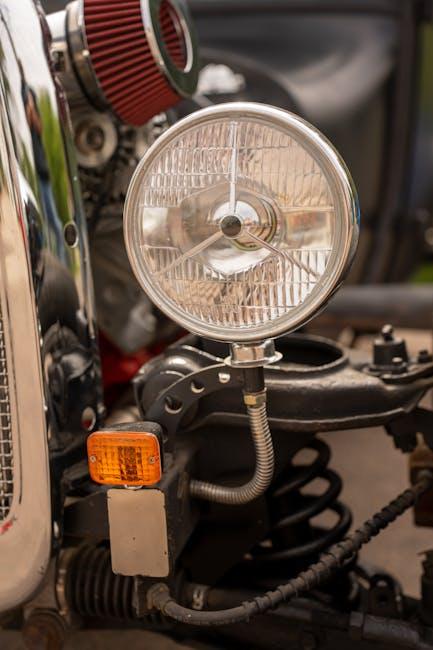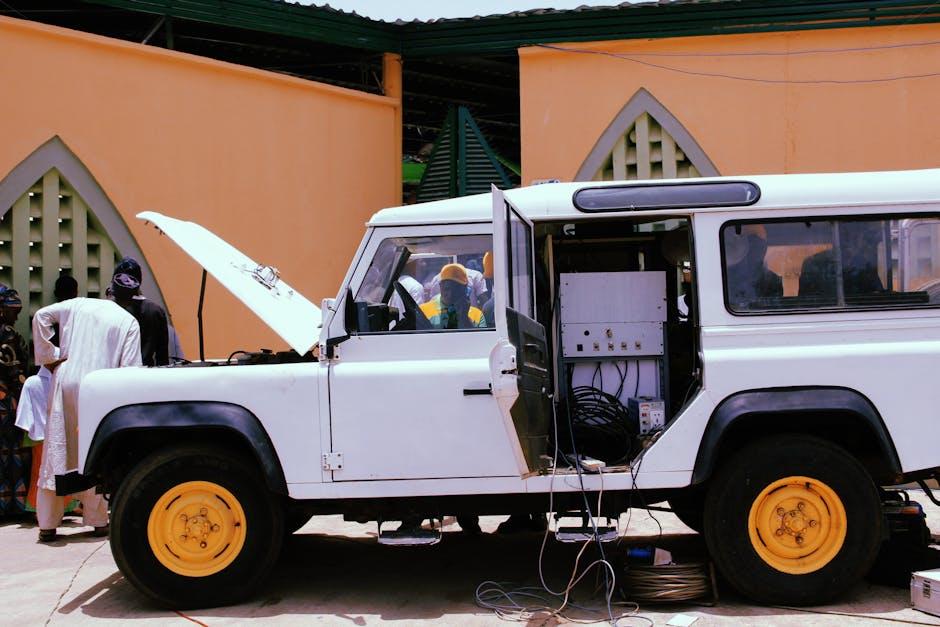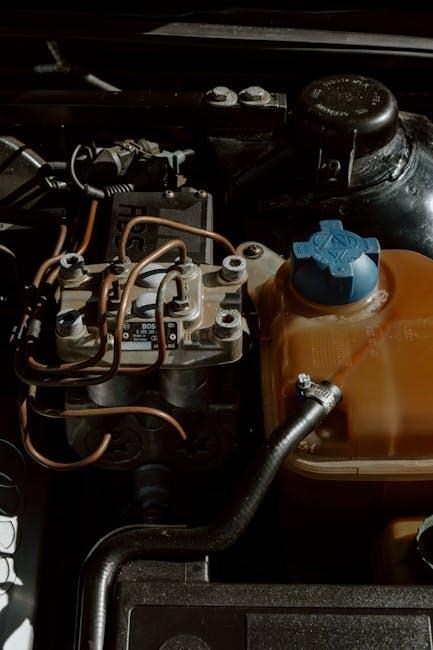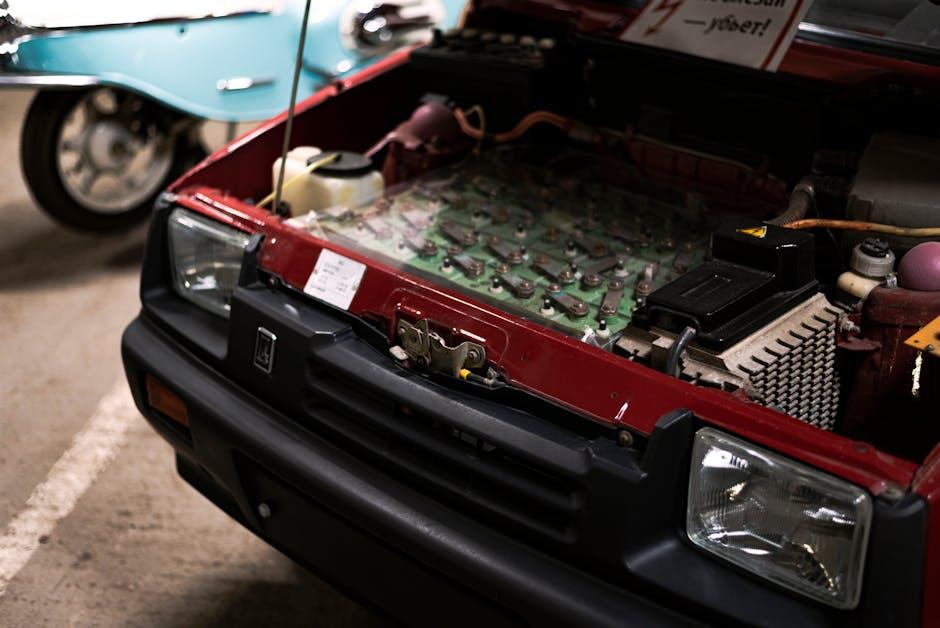When the dashboard lights flicker unexpectedly or the radio suddenly falls silent, the mystery often lies hidden beneath your car’s sleek exterior—in its wiring. Car wiring problems can be as frustrating as they are puzzling, turning routine drives into tests of patience. Yet, understanding how to troubleshoot these electrical hiccups doesn’t require a degree in engineering; it calls for a curious mind, a methodical approach, and a bit of know-how. In this article, we’ll navigate the twists and turns of automotive wiring, helping you decode the sparks and shorts that can disrupt your vehicle’s performance—one wire at a time.
Table of Contents
- Understanding Common Symptoms of Car Wiring Issues
- Essential Tools for Diagnosing Electrical Faults
- Step-by-Step Guide to Inspecting Wiring Harnesses
- Techniques for Testing Continuity and Voltage
- Safely Repairing and Replacing Damaged Wires
- Preventative Maintenance Tips to Avoid Future Wiring Problems
- Q&A
- Closing Remarks

Understanding Common Symptoms of Car Wiring Issues
When your car starts showing signs that its electrical system isn’t functioning properly, it’s crucial to recognize the early symptoms before the issue escalates. Flickering dashboard lights, intermittent or non-working power windows, and unexpected battery drain often serve as red flags. Additionally, if you notice your headlights dimming or the stereo cutting out intermittently, these could indicate underlying wiring problems. Such symptoms might seem minor at first but ignoring them could lead to larger electrical failures.
Understanding these symptoms can help guide your troubleshooting process effectively. Keep an eye out for the following warning signs:
- Burning smell: A pungent, acrid odor can signal overheated wires or short circuits.
- Corroded or damaged connectors: These reduce electrical flow, leading to inconsistent performance.
- Blown fuses repeatedly: Indicates persistent electrical shorts or overloads.
- Non-functioning electrical accessories: If multiple components fail simultaneously, wiring faults are usually the cause.
| Symptom | Possible Cause | Impact |
|---|---|---|
| Dim headlights | Loose ground connection | Reduced visibility at night |
| Battery drains fast | Parasitic draw from shorted wire | Frequent jump-starts needed |
| Power windows fail | Broken wire in door harness | Inoperable window controls |

Essential Tools for Diagnosing Electrical Faults
To effectively pinpoint issues in your car’s electrical system, a reliable set of diagnostic tools is indispensable. Among the essentials, a multimeter stands out as the cornerstone instrument, measuring voltage, current, and resistance to reveal anomalies. An OBD-II scanner is another vital tool, allowing users to extract error codes from the vehicle’s computer, guiding you to the exact malfunctioning circuit or sensor. Don’t overlook the value of test lights and circuit testers either; these small but mighty devices help confirm the presence or absence of electrical flow in specific wires or fuses, making troubleshooting faster and more precise.
Having a well-organized toolkit can save significant time and frustration. A few other indispensable items include:
- Wire strippers and crimpers for repairing or replacing damaged wire segments
- Heat shrink tubing
- Electrical tape for temporary fixes and bundling wires neatly
- Backing probes that allow you to test wires without disconnecting connectors
For clear organization, this quick overview outlines common tools and their primary uses:
| Tool | Function | Best Used For |
|---|---|---|
| Multimeter | Measures voltage, current, resistance | Testing circuit continuity and electrical faults |
| OBD-II Scanner | Reads diagnostic codes | Identifying ECU-related wiring problems |
| Test Light | Detects power presence | Quick fuse and connection checks |
| Wire Strippers | Removes insulation cleanly | Wire repair and replacement |

Step-by-Step Guide to Inspecting Wiring Harnesses
Begin by carefully disconnecting the wiring harness from the component it serves; this provides a clear view to spot any damage. Look for signs such as frayed wires, corrosion, discoloration, or melted insulation. Use a flashlight to illuminate tight spaces and a magnifying glass if needed to identify fine cracks or broken strands. Taking note of any exposed copper or broken connectors can prevent unexpected shorts or disconnections during operation.
Next, employ a systematic approach using a multimeter to test each wire’s continuity and resistance. Keep a handy checklist to mark off wires as you confirm their integrity and connection quality. Here’s a simple reference table for interpreting your multimeter readings:
| Reading | Condition |
|---|---|
| 0 Ω | Perfect continuity, no breaks |
| Very high or infinite Ω | Wire broken or disconnected |
| Low but non-zero Ω | Possible corrosion or partial damage |
- Mark suspicious wires with colored tape.
- Avoid forcibly bending harnesses to prevent hidden breaks.
- Document findings thoroughly to aid further diagnostics.

Techniques for Testing Continuity and Voltage
When diagnosing electrical issues in your car’s wiring, mastering the art of checking continuity and voltage is essential. Continuity tests help identify breaks or faulty connections in wires, using a multimeter set to the continuity mode. Simply connect the probes to both ends of the wire or circuit; a continuous beep indicates a good connection, while silence signals a break. This quick check prevents costly replacements and ensures that every wire is functioning as it should. To complement this, voltage testing confirms whether electrical current is reaching its intended destination. Measuring voltage at various points along a circuit allows you to isolate power drops or shorts effectively.
Employing systematic techniques boosts troubleshooting efficiency. Follow these handy tips:
- Start at the source: Test voltage at the battery or fuse box before moving further along the circuit.
- Use the right settings: Set your multimeter to the appropriate voltage range to avoid damage and inaccurate readings.
- Inspect connectors: Loose or corroded terminals often cause continuity failures even if the wire appears intact.
- Document findings: Keep notes or photos of test results to track recurring issues and confirm repairs.
| Testing Method | Ideal Use | Common Indicator |
|---|---|---|
| Continuity Test | Check wire integrity | Beep sound for good connection |
| Voltage Test | Verify power delivery | Voltage reading within expected range |

Safely Repairing and Replacing Damaged Wires
Before diving into any repair, always disconnect the car’s battery to prevent shocks or short circuits. Inspect the wires carefully and look for common damage signs such as fraying, discoloration, or exposed copper. When replacing wires, choose the exact gauge and type specified by your vehicle manufacturer to avoid overheating or electrical failure. Remember, a clean work area and good lighting will help you spot issues more effectively and allow for precise repairs.
For sealing and protecting the repaired sections, use heat shrink tubing or high-quality electrical tape designed for automotive use. When soldering wires, ensure a solid connection by heating the wires evenly before applying solder—this promotes conductivity and durability. After repairs, protect wiring with a split loom or conduit to shield against abrasion and moisture. Here’s a quick checklist to keep your wiring repairs safe and effective:
- Disconnect battery before starting
- Match wire gauge and insulation type
- Make clean cuts and remove corrosion
- Use solder and heat shrink for strong joints
- Test connections before reassembling
| Tool/Material | Purpose | Tip |
|---|---|---|
| Multimeter | Test voltage, continuity | Use continuity mode for wire breaks |
| Soldering iron | Join wires securely | Preheat wires before applying solder |
| Heat shrink tubing | Insulate & protect connections | Apply heat evenly for a tight seal |
| Wire strippers | Strip insulation cleanly | Avoid nicking wire strands |
| Electrical tape | Provide extra insulation | Use automotive-grade for durability |

Preventative Maintenance Tips to Avoid Future Wiring Problems
Consistent care and smart habits are your best defence against electrical mishaps under the hood. Start by routinely inspecting your vehicle’s wiring harnesses for any signs of wear such as frayed insulation or loose connectors. Protect wires from excessive heat and moisture by securing them away from engine components that generate high temperatures or areas prone to water exposure. Don’t overlook the importance of using dielectric grease on connector terminals—this simple step prevents corrosion and ensures a reliable electrical connection over time.
Additionally, invest time in these key practices to maintain a healthy wiring system:
- Regularly check fuses and relays: Replace any that appear worn to avoid short circuits.
- Secure wiring with proper clips and ties: Prevents chafing and accidental disconnections caused by vibrations.
- Keep battery terminals clean: Corrosion here can lead to voltage drops affecting the entire wiring network.
| Maintenance Task | Frequency | Purpose |
|---|---|---|
| Visual Wiring Check | Every 3 months | Catch wear before failure |
| Fuse and Relay Inspection | Every 6 months | Ensure proper current flow |
| Battery Terminal Cleaning | Monthly | Maintain voltage stability |
Q&A
Q: What are the common signs of car wiring problems?
A: Flickering lights, non-functioning electrical components, blown fuses, or a car that won’t start can all hint at wiring issues. Strange smells like burning plastic or sudden electrical failures while driving also serve as warning signals.
Q: How should I begin troubleshooting my car’s wiring?
A: Start with a visual inspection. Look for frayed wires, corrosion on connectors, loose terminals, or melted insulation. Follow the wiring harnesses to identify any obvious damage or pinch points.
Q: What tools do I need to diagnose wiring problems?
A: Essential tools include a multimeter for testing voltage and continuity, a test light, wire strippers, electrical tape, and possibly a wiring diagram specific to your car model.
Q: How can I test if a wire is broken or has a short circuit?
A: Use a multimeter set to continuity mode. Disconnect the wire from power sources and check for continuity. A break shows no continuity, while a short circuit can be identified by unexpected continuity to ground or other wires.
Q: Is it safe to repair wiring by myself?
A: Minor repairs like fixing loose connections or replacing blown fuses are generally safe with proper precautions. For complex issues involving the main wiring harness or airbag systems, consult a professional to avoid safety risks.
Q: What’s the best way to fix damaged wiring?
A: Cut out the damaged section, strip the insulation on both ends, and reconnect using solder or crimp connectors. Always insulate connections with heat-shrink tubing or quality electrical tape to prevent corrosion and shorts.
Q: Why does my car keep blowing fuses?
A: Constant blown fuses usually indicate a short circuit or an electrical component drawing more current than normal. Identifying the offending circuit with a multimeter and inspecting related wiring can point to the root cause.
Q: When should I replace the entire wiring harness?
A: Replacement is often necessary if there’s widespread damage, extensive corrosion, or if repairs become too numerous and unreliable. Severe rodent damage or water intrusion can also warrant a full harness swap.
Q: Can environmental factors affect car wiring?
A: Absolutely. Heat, moisture, salt from roads, and rodents are common culprits that deteriorate or damage wiring over time, making regular inspections important, especially in harsh climates.
Q: Where can I find wiring diagrams for my vehicle?
A: Manufacturer service manuals, online automotive forums, and specialized repair databases are great resources. Accurate diagrams are invaluable for tracing circuits and making reliable repairs.
This Q&A aims to guide drivers through the maze of car wiring troubles with practical tips and a steady, neutral tone—helping you light the way back to a fully functional vehicle.
Closing Remarks
Navigating the tangled maze of car wiring issues may seem daunting at first, but with patience, a methodical approach, and the right set of tools, even the most stubborn electrical gremlins can be tamed. Remember, each wire is a thread in the intricate tapestry of your vehicle’s functionality, and understanding their story can save you time, money, and a lot of frustration. Whether you’re a seasoned DIY mechanic or just starting out, troubleshooting wiring problems is as much about cultivating curiosity as it is about technical know-how. So next time your dashboard flickers or your lights won’t shine, take a deep breath, grab your multimeter, and dive into the circuit — your car’s silent signals are waiting to be heard.

